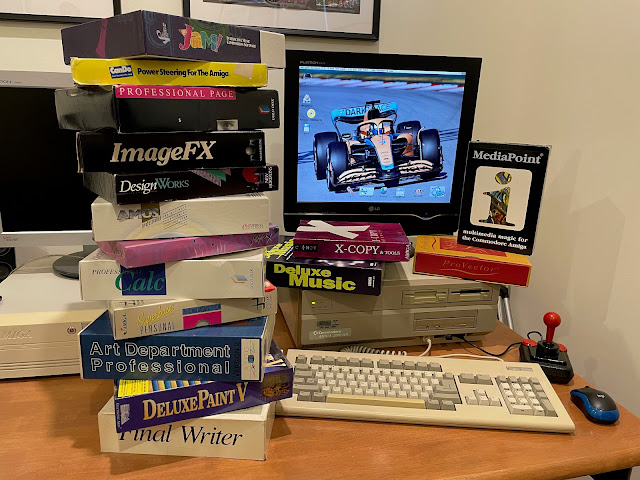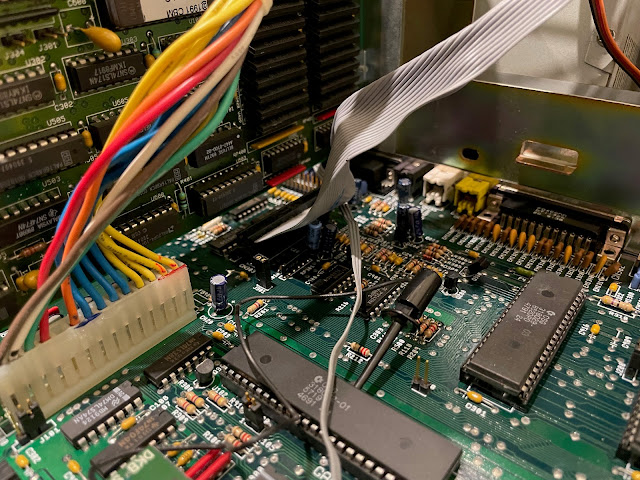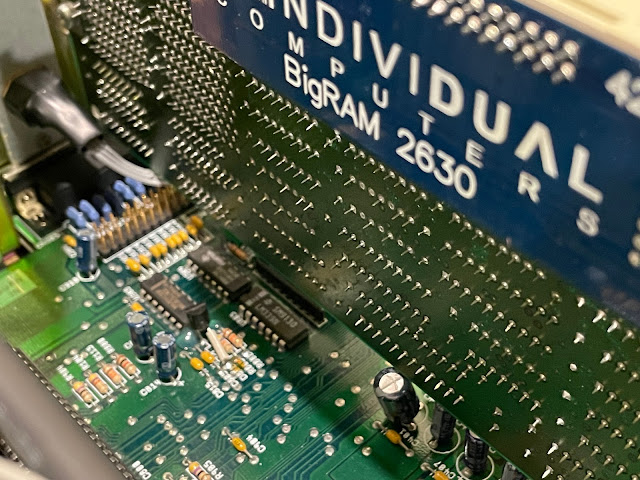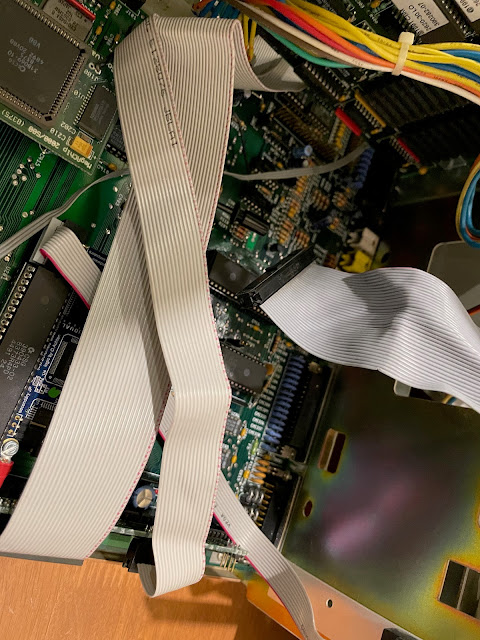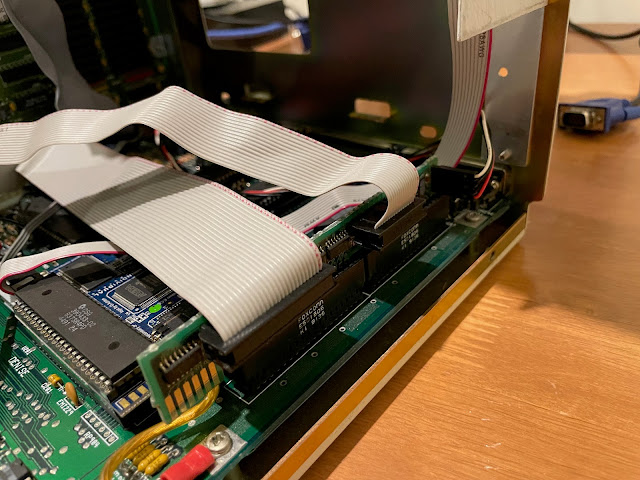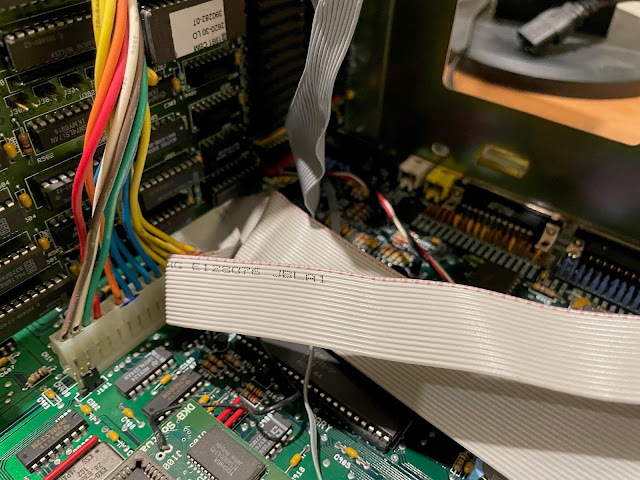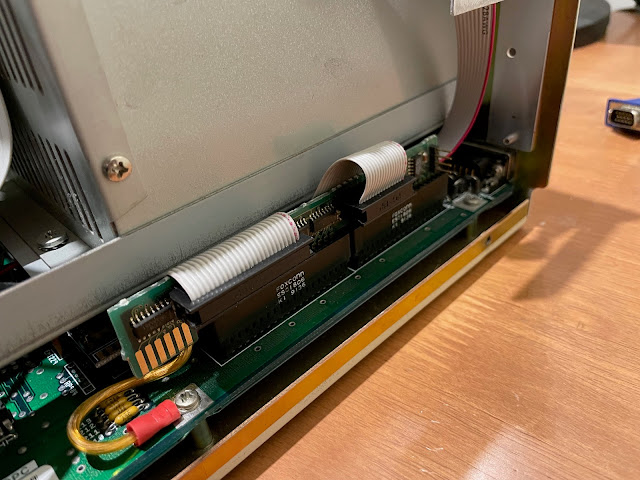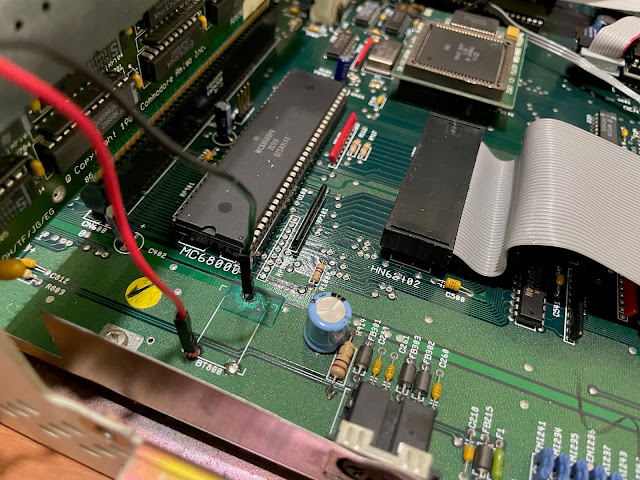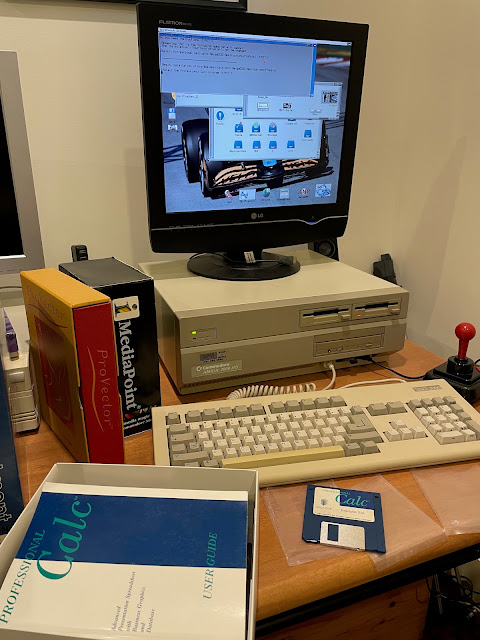Amiga 2000 Rebuild Project Part 2
Today I am continuing my rebuild of my owned from new Amiga 2000. I have done a lot of work already in Part 1 if you want to read up first, as I am continuing from where Part 1 ends.
I wanted to make a brief mention that it has now officially been over 10 years since I started this blog back in June 2012. I have been too busy of late to write a self congratulatory blog post on the milestone!
Hard to believe it has been 10 years, and I have done so much on the blog, looking at AmigaOne X1000, X5000, A1222, AmigaOS 4, MorphOS, and AROS Next Gen Amiga systems, multiple FPGA Amiga systems, all my Classic Amiga systems, AmigaOS 3.2 and many hardware upgrades including Vampires, and plenty of step by step system builds, and software reviews too.
I even do coverage on other computers like the C64, Intellivision and it's home-brew scene, Mega 65, Raspberry Pi, Pinebook Pro, HP Microservers, Amiga emulators, modern gaming PC rigs and many more!
During these ten years I even helped to run the local Adelaide Retro Computer Group for a few years. Pleased to say it is still going strong in 2022 and I still go to a few events a year when my work schedule permits.
Please take a look at my hundreds of blog entries from 2012 to today when you get a chance - there is a lot of useful information that took thousands of hours of work to produce - hopefully people can continue to learn from my mistakes and successes!
I am sorry that these days with my current work commitments I don't have the time to write as many blog entries as I used to, or to personally respond to all your comments on my articles, but I assure you that I do read them all, and it is greatly appreciated that you take the time to provide further advice, information, and your thanks/appreciation when my posts helped you!
It has been a lot of fun and I have really enjoyed sharing my passions with you all. I hope you have enjoyed the blog and continue to read on!
Ok, enough of that, let's dive in to the second part of my Amiga 2000 rebuild work.
When I left Part 1, I had broken the Picasso IV card (still scary stuff doing that) to relocate the video slot section of the board to the video slot, located on the other side of the Amiga 2000 motherboard.
To connect the video slot part back to the Picasso IV card, it has three cables that need to run between the card in the Zorro slot and the video slot, In the way though, is the 68030 accelerator board, sitting in the CPU slot between the Zorro slots and the Video slot on the far side.
There is a small gap at the bottom the card (and it is small) to thread three cables through.
I have to be careful here, as the cables can disconnect the MegaChip connector to the Chip the cables pass over...I removed the floppy cable temporarily as it was hard to thread with it in place. I put it back afterwards. With the kickstart switcher cable, MegaChip cable connector to a chip (under the cables), three cables for the Picasso IV, Indivision ECS cable to the VGA port, and the floppy cable, it is busy here!
Technically speaking, I probably don't need the Indivision ECS in theory. In practice, I found that I did need it for the early boot menu, which doesn't appear on the Picasso IV video pass through - I found the same issue on the Amiga 3000 too..
Previous owner of the board also modded the battery connections to to put two connectors I can easily plug in the battery to - very grateful for this as I lack the skills to solder it in myself.
Here is the final location - I made sure I can remove and install the PSU/floppy/CD cage without damaging the cable running close by. All good.
Connecting the other end of the picasso iv to the three cables threaded under the CPU card proved more challenging, as the connectors are at the bottom of the card. I didn't want to remove the CPU card and risk disconnecting the megaChip moving the cables around too much - with the PSU cage in place it is hard to see if I do that by accident.
I then powered on the Amiga 2000, and set to work installing the Picasso 96 software to setup the Picasso IV card under AmigaOS 3.2.
I walked through the installer, and these are the settings I did before proceeding with the installation of Picasso 96.
That done, I rebooted and then used Picasso96Mode in Prefs to test the screen resolutions on the Picasso IV, and tune then for the monitor.
One limitation I have with the Amiga 2000 is Fast memory usage on the Zorro II bus. On the Amiga 2000, the limit is 8MB.

This change means the actual resolutions I can use on the Picasso IV will not be the maximum, as I will be limited to 2MB memory on the card. In effect, turning it into a Picasso II! Accordingly, I choose to use 800x600 at 24bit colour, rather than the preferred 1024x768 or 1280x1024, that require the full 4MB on the Picasso.
That is a compromise, but not a really important one at this time. The 68030 accelerator is the limiting factor speed wise, so having a slightly lower resolution is not a bad thing...
With the resolution now setup in Picasso 96 mode, I can now enjoy a 24bit workbench on the Amiga 2000 under AmigaOS 3.2 - looking awesome :-)
As I was working on this build, I was enjoying listening to a new 2xLP I received called Commodore 64 Vinyl Tribute volume 2.
Moving back to the Amiga 2000, I started install the important software straight up - Hippoplayer (new 2022 version) to listen to my favourite mods, MUI, AHI and AmigaAmp for MP3 playback.
In the case of AmigaAmp, I hit problems with the Prisma card MHI driver - it refused to find the card no matter what I did.
I installed WHDLoad, my legally obtained roms from Amiga Forever to use it, USB support via Poseidon, and more!
I celebrated by watching some demos via WHDLoad from AmigaOS 3.2 workbench. Very nice:
I also installed Worthy, a more recent Amiga game which is great fun - recommend getting it if you don't have it already.
I then installed my purchased copy of Roadshow (for TCP/IP networking support using the X-Surf 100 card), MUI 5, and AmiSSL 5 latest version also for the SSL certificates for web browsing.




I tried a few things but couldn't work out what the issue stopping booting was. In the end I wiped the AmigaOS32 partition and copied my backup back onto it to restore the functionality.
Anyway, very cool. It proved to be a nice distraction while waiting for my AmigaOS3.2 backup to be copied back to the partition.
I know I could mount ADF files to install it, but I wanted to do it old school, from the original disks. I went to some trouble over the last year to track some applications I never had, to complete the software I wanted to have on my Amiga systems. Many had never been opened and still in shrink wrap. It's nice to open them up and use the real disks.
Progressing through the application installs makes me appreciated just how much great software we have on the Amiga, not just games and demos.
I think it is a shame I didn't get to use some of the titles back in the day as I couldn't afford them. Nowadays they are very cheap as not many people are interested in the applications, mainly the games. I am happy with that, as it allowed me to complete my collection much cheaper.
I tried installing AMOS professional, featuring possibly the worst installation program I have ever seen.
I expected to hit trouble with it detecting the partition sizes, and so it proved. I have a very negative sized hard disk...it was 4GB, which I was disappointed it failed to detect correctly given it is a support standard FastFileSystem size on the original AmigaOS.
So, I thought I would try something different. I got a small USB stick that is only 128MB in size, and relabelled it as AmosPro. I added a drawer to it called AMOSPro.
Unfortunately it then immediately crashed and refused to go further. Perhaps I should prep a FFS USB stick instead of FAT....another time perhaps.
In the later 1990's and early 2000's I continued to be involved in all things Amiga, and picked up a number of games that can work with RTG, and not just AGA machines. This is great, as it means they can potentially run on the Amiga 2000 too, now that I have a good Picasso IV graphics card installed in it.

Given it is an 68030, I am impressed how well it runs in 1x1 pixel mode on the Picasso IV, admittedly in a non-full screen filling way.
Foundation Directors Cut looks beautiful running on RTG modes using the Picasso IV on the Amiga 2000:
Exodus - The last war, is another game I bought on CD in those lean years for Amiga games, and another that can use the RTG modes:
I tried Desert Racing of BarDos too, but this was unplayably slow. It says it can run on a 68030 - trust me, the game can't. You can easily measure the game screen updating in second per frame, not frames per second...
I then loaded Payback onto my Amiga 2000, another game that can use RTG. Without the larger hard disk and RTG graphics card, I couldn't play this before on the Amiga 2000. But now I can:
Given my failures trying to use AmigaAmp with the Prisma card, I removed it from the Amiga 2000 next and tried a different solution.
Now, I will preface what happened next by saying first up that I was VERY careful to ensure the clock port cable was connected correctly to the Buddha's clock port interface. If you get it wrong, the card blows up - literally. I know this, and I have hooked it up many times with no issues.


I then installed it into my crowded Amiga 2000 expansion bay.
I kept the Delfina isolated from the system, as I understand the risks, even though I followed all instructions to the letter.
